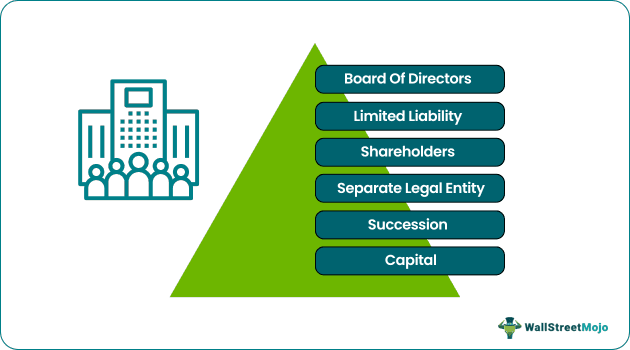Table Of Contents
What Are Publicly Traded Companies?
Publicly Traded Companies, also known as publicly listed companies, refer to all those companies which have their shares listed on any of the stock exchanges which allow the trading of their shares to the common public, i.e., anyone can sell or purchase the shares of these companies from the open market.

It is a company that has listed itself on at least one public stock exchange and has issued securities for ownership in the company to public investors. The company makes itself public through a process known as Initial Public Offering, which must be approved by any country's Securities and Exchange Regulator.
Key Takeaways
- Publicly Traded Companies are listed on a stock market that permits the general public to trade their shares.
- These companies are limited by shares and are represented by suffixing 'Ltd.'. They invite the general public to subscribe to the company's shares and become shareholders.
- A private company can pay the shareholders dividends if they choose to. The company must also involve the shareholders in voting for several major decisions.
- Public Companies can invite the general public to buy the company's shares through an Initial Public Offer (IPO). These shares are subsequently traded among investors on the stock exchanges.
How Do Publicly Traded Companies Work?
A publicly-traded company is a company that has listed itself on at least one public stock exchange and has issued securities for ownership in the organization to public investors. Being a public company has advantages such as access to huge capital and increased liquidity. At the same time, there are certain disadvantages, such as many regulatory scrutinies and adhering to reporting requirements.
A certain percentage of the shares are issued to the public, but generally, the controlling stake resides with the majority shareholder. Going public means the secondary market can determine the entire company's value through trading between investors.
Private organizations go public through a method called Initial Public Offering. They take the help of investment bankers to prepare a prospectus and, if possible, underwrite the issue. The investment bankers also do their due diligence in finding out the best offer price
How Do They Raise Capital?
Let us understand the process of raising capital by going public, undertaken by all companies from the small to popular publicly traded companies:
- A team is formed for an external IPO which will comprise of various stakeholders such as underwriters from investment banks, lawyers, certified accountants, and Securities Regulator experts.
- Proper details and information such as financial performance and forecast of future results are a part of the company prospectus and reviewed by the abovementioned stakeholders.
- External auditors then audit the financial performance mentioned in the prospectus to generate opinions.
- The company then files its prospectus with the Securities and Exchange Commission and provides any mandatory documents that the Commission requires, and sets a date for the offering.
Example
Shares of such companies are traded in the open market between retail investors and institutional investors. Generally, due to the requirement of large amounts of capital, privately held companies opt to become public after fulfilling all regulatory requirements. Examples of popular publicly traded companies are Procter and Gamble, Google, Apple, Tesla, etc.
Advantages & Disadvantages
Top publicly traded companies choose to offer a share of ownership of their business to the public for raising capital or diversification. However, this process can have its own share of upsides and downsides. Let us discuss them through the points below:
Advantages
- Publicly traded companies have some distinct advantages over privately held companies, such as selling future stakes in equity, raising more capital by issuing stocks, more diverse investors, etc. However, being public makes such organizations vulnerable to increased regulatory scrutiny and far less control over the company's decisions by owners and company founders.
- Additionally, companies have to release annual reports and other mandatory documents as instructed by the securities regulator, and shareholders also have the right to additional documents.
- Also, shareholders vote during certain company decisions, such as changing the corporate structure. Such companies can also opt to become private if the owners buy back all the shares from their shareholders either at a premium or discount based on company performance.
Disadvantages
- Publicly traded companies have access to a huge amount of capital since they can issue additional stock and attract new investors. Also, they do not have any major liquidity concerns since it has access to many investors. Privately held companies do not have ready access to capital and can sell shares to venture capital and private equity players when they want to.
- While publicly traded companies have to comply with strict regulatory requirements as mandated by the securities and exchange commission of the country, privately held companies do not have any such mandatory requirements.
- Privately held companies have to report when they reach $10 million in assets and more than 500 shareholders. Publicly traded companies must file mandatory annual reports, quarterly reports, etc. Additional information must be shared with the company's shareholders. Valuation of a publicly-traded company is much easier since there is a lot of information available. This is because of the mandatory reporting requirements by the securities regulator.
- They can be valued by DCF, Comparable Company Analysis, and Transaction Method. Although the valuation of privately held firms is done through the above three methods, they are less reliable due to a lack of information.
